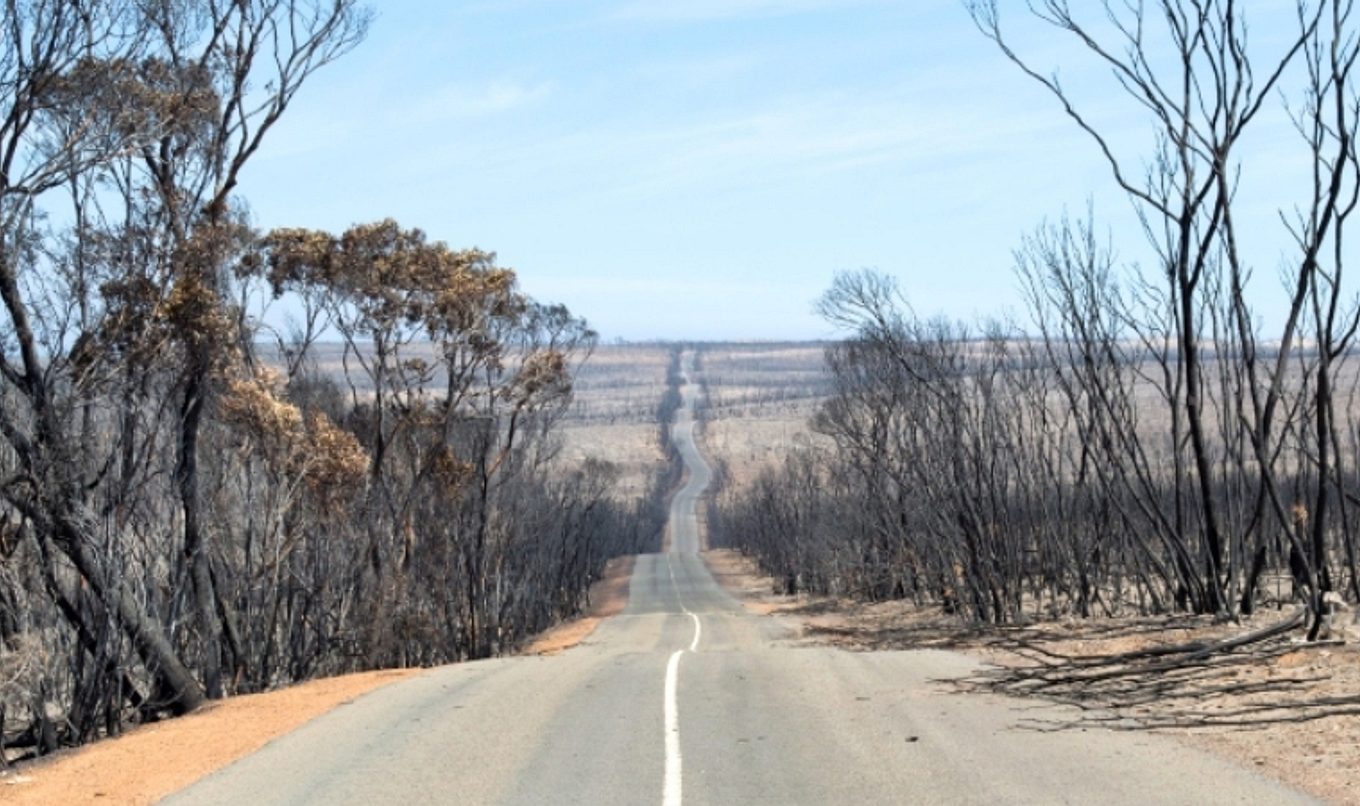Bushfire and recovery
Fire is part of our ecology, but the recent fires on Kangaroo Island have burnt more vegetation than any fire on the island in almost a century.

Since fire broke out on the island on 20 December 2019, about 210,000 hectares of land has burnt – nearly half of the island.
Of the 90,195 hectares of impacted parks on the island managed by the Department for Environment and Water, it is estimated that up to 86,000 hectares has been burnt.
A significant percentage of the Flinders Chase National Park and Ravine des Casoars Wilderness Protection Area has been blackened. Much of this land was also burnt in December 2007, when bushfires charred more than 75,000 hectares of national parks on the island.
Acting National Parks and Wildlife Executive Director Cate Hart said it was likely that there would be areas within the fire perimeter that had not burnt, but it was not yet safe to survey all areas.
“Alongside the firefighting that continues, the department’s immediate priorities are supporting the rescue of injured wildlife and determining the impact on native animals, vegetation and park infrastructure,” she said.
“We are working with staff and other people on Kangaroo Island, along with other experts, to develop a comprehensive recovery plan.”
While the number of animals killed in the fires is yet to be determined, a significant number of koalas have perished, and large numbers of kangaroos and other native species have been killed or injured.
Possums, koalas, hollow-nesting birds and small animals such as bandicoots and echidnas will be most affected by the loss of habitat.
About 75 per cent of South Australia’s endangered glossy black-cockatoo population, found only on Kangaroo Island, lived in the bushfire zone and a significant percentage of its known feeding habitat has been burnt. Recovery actions will include providing nest boxes and planting new vegetation.
Large areas of habitat of the Kangaroo Island dunnart have also been destroyed.
Much of the department’s infrastructure in the affected parks has been destroyed, including campgrounds, walking trails, picnic areas and the Rocky River visitor complex.
“We are keen to work with the tourism industry to determine alternative tourism destinations and activities in the parts of the island that have not been affected by fire,” Ms Hart said.
“We will be reopening affected parks and iconic tourism sites as soon as it is safe and practical to do so, even if it is with temporary infrastructure.”
A large fire at Cudlee Creek broke out on the same day and burnt about 23,000 hectares, around 158 hectares of which was the Charleston and Porter Scrub conservation parks.
While local koalas were affected —and many are being cared for by animal rescue groups — most of the high-density populations of koalas are in other areas, including Horsnell Gully, Morialta, Belair and Cleland, and were not affected.
A fire near Yorketown on 20 November burnt about 5000 hectares, while a blaze started by dry lightning at Keilira, in the south east, damaged about 23,000 hectares.
The National Parks and Wildlife Service SA has joined forces with Nature Foundation SA to launch a special fund to re-establish habitat for wildlife in the state’s bushfire-ravaged regions.
To donate visit: https://www.naturefoundation.org.au/support-us/wildlife-recovery-fund

